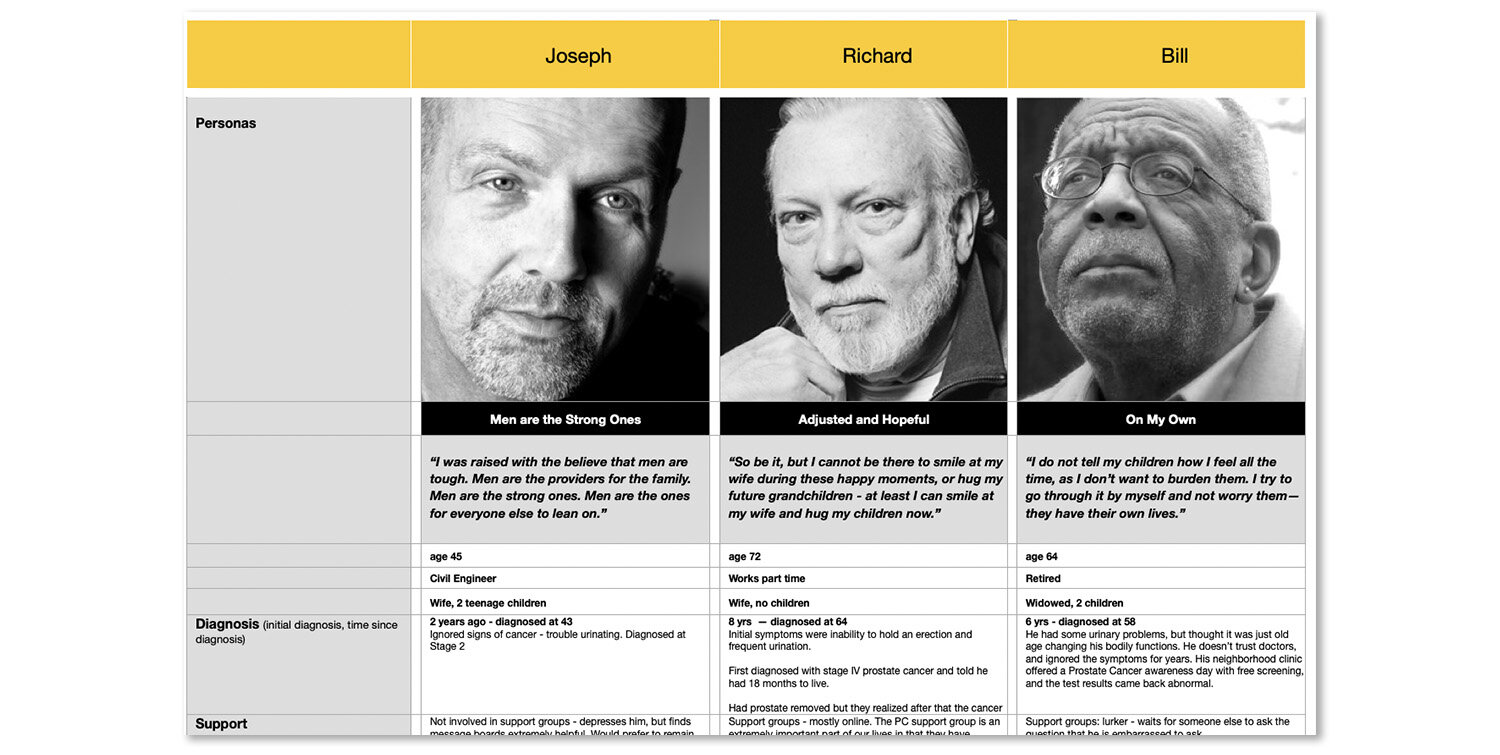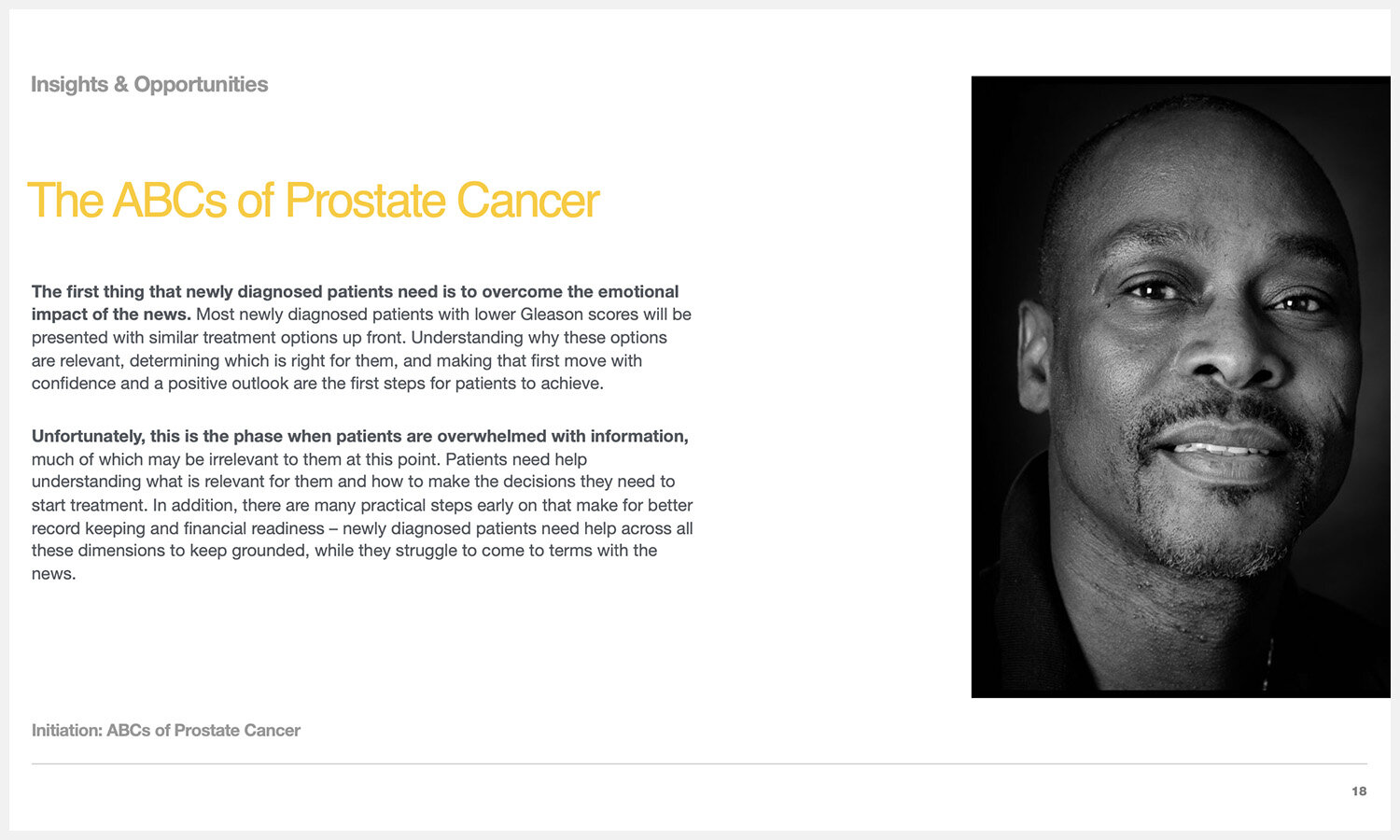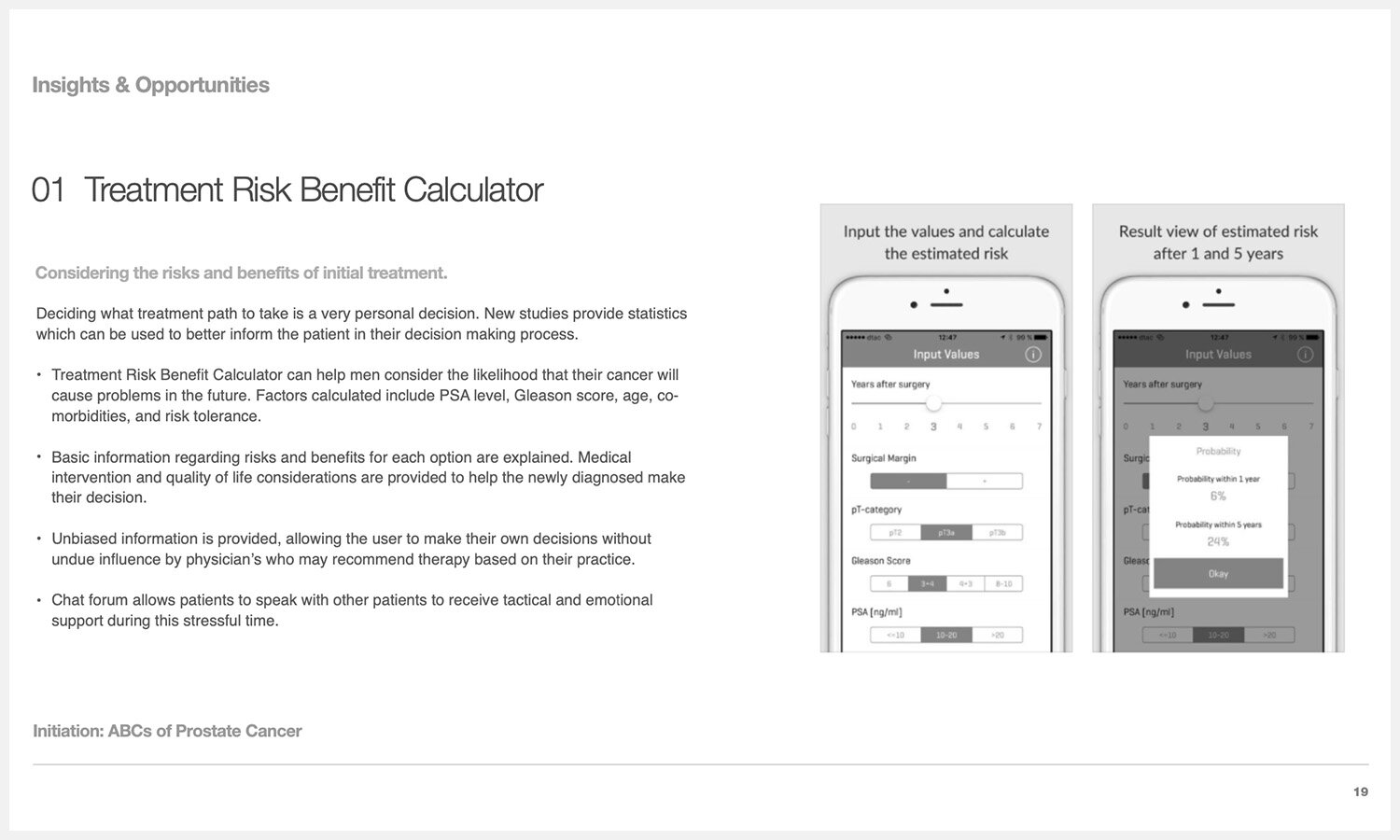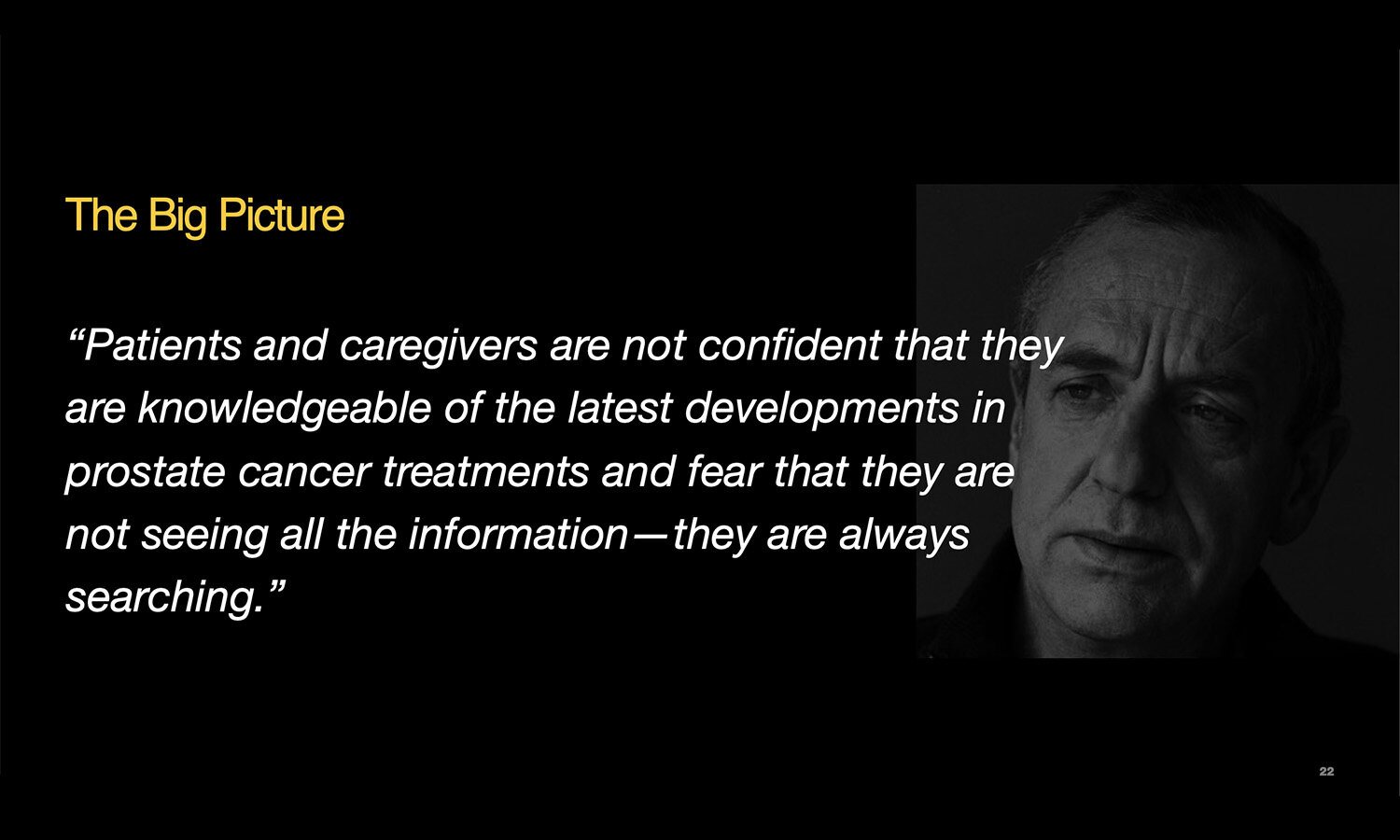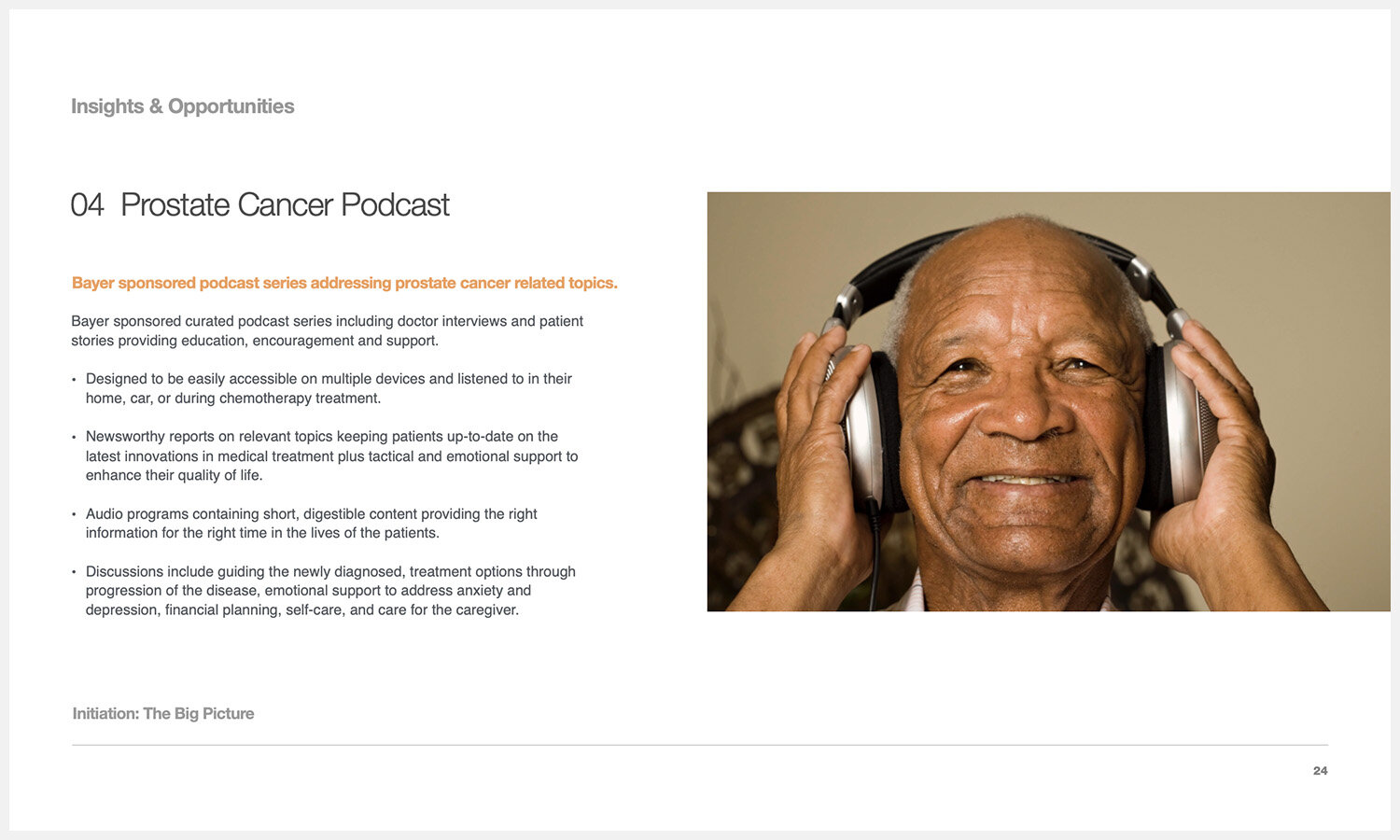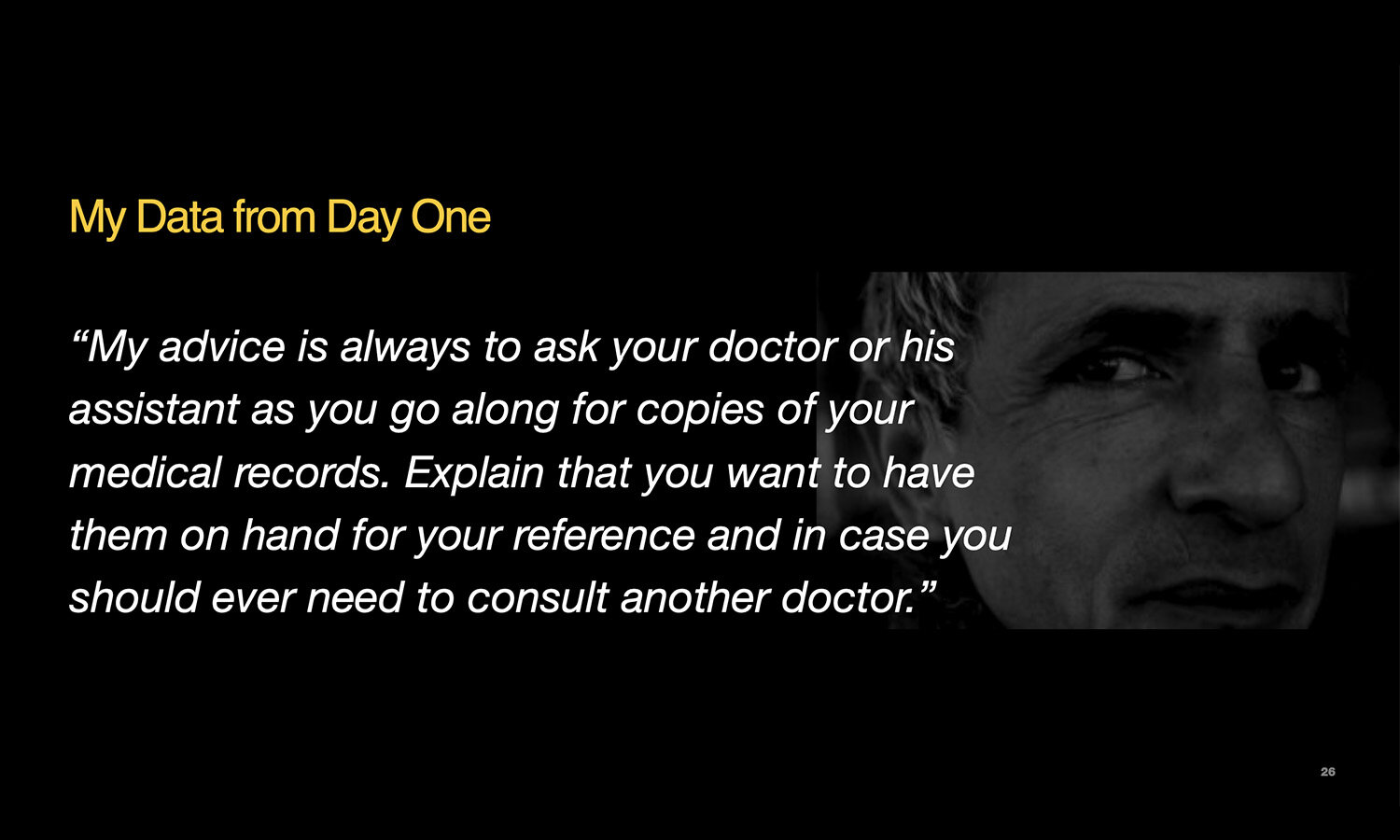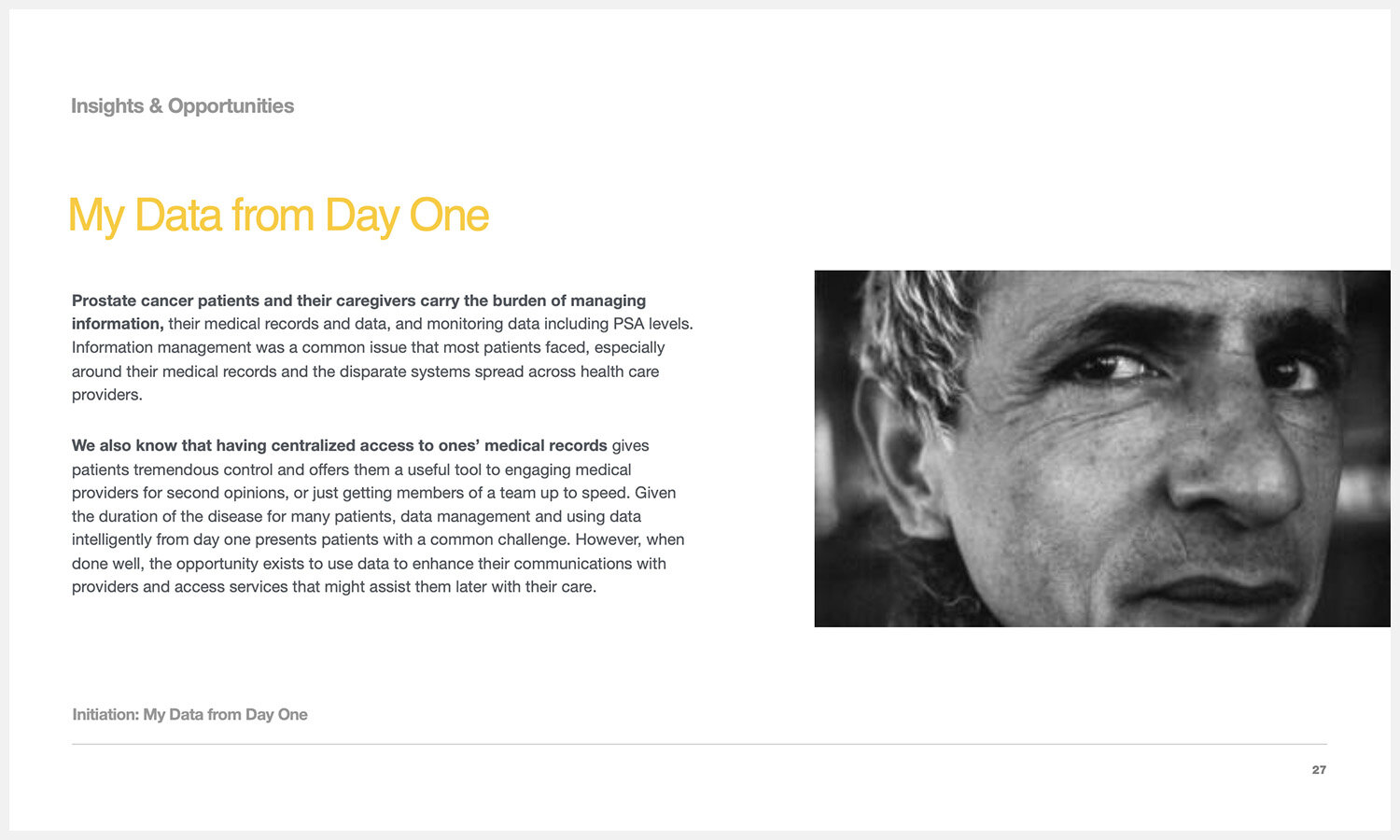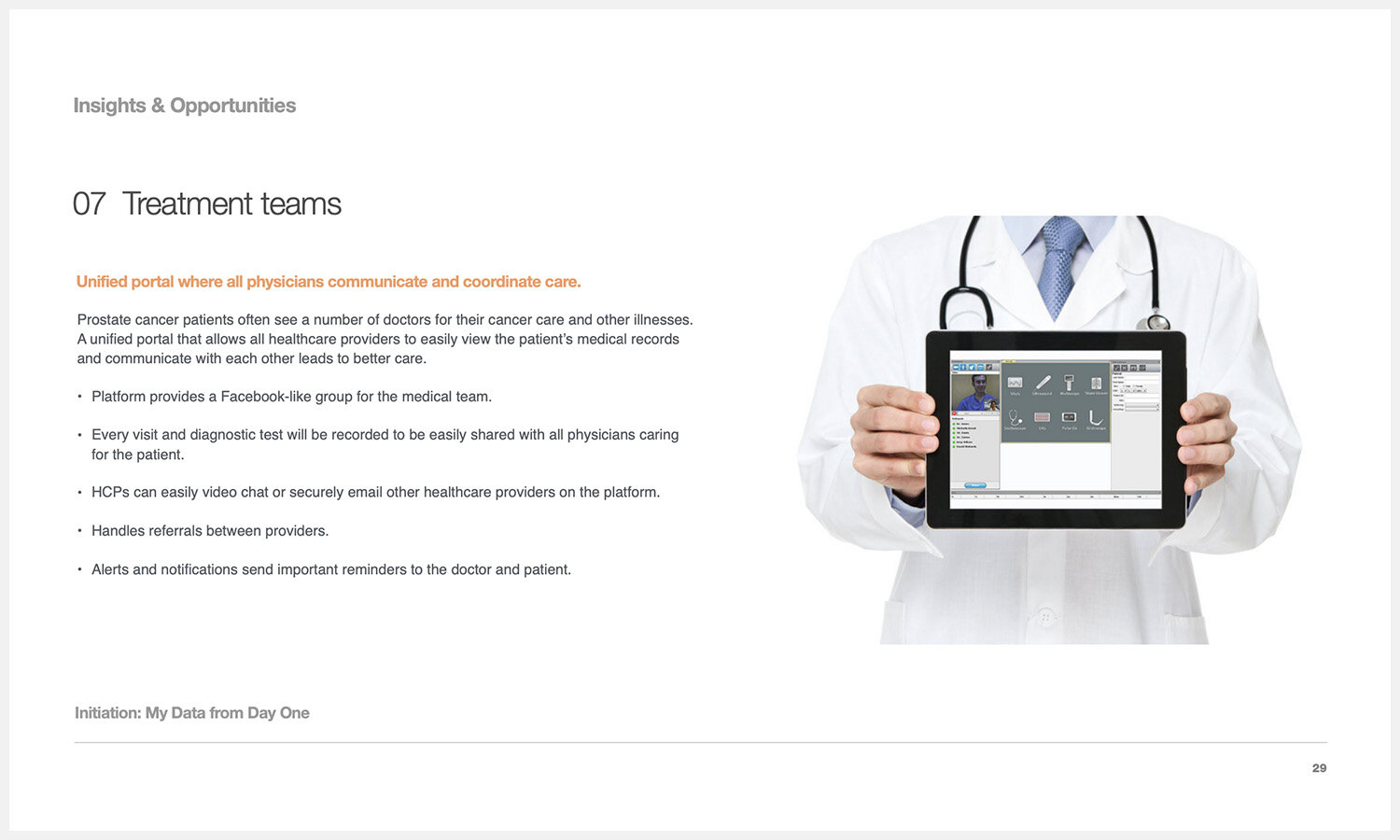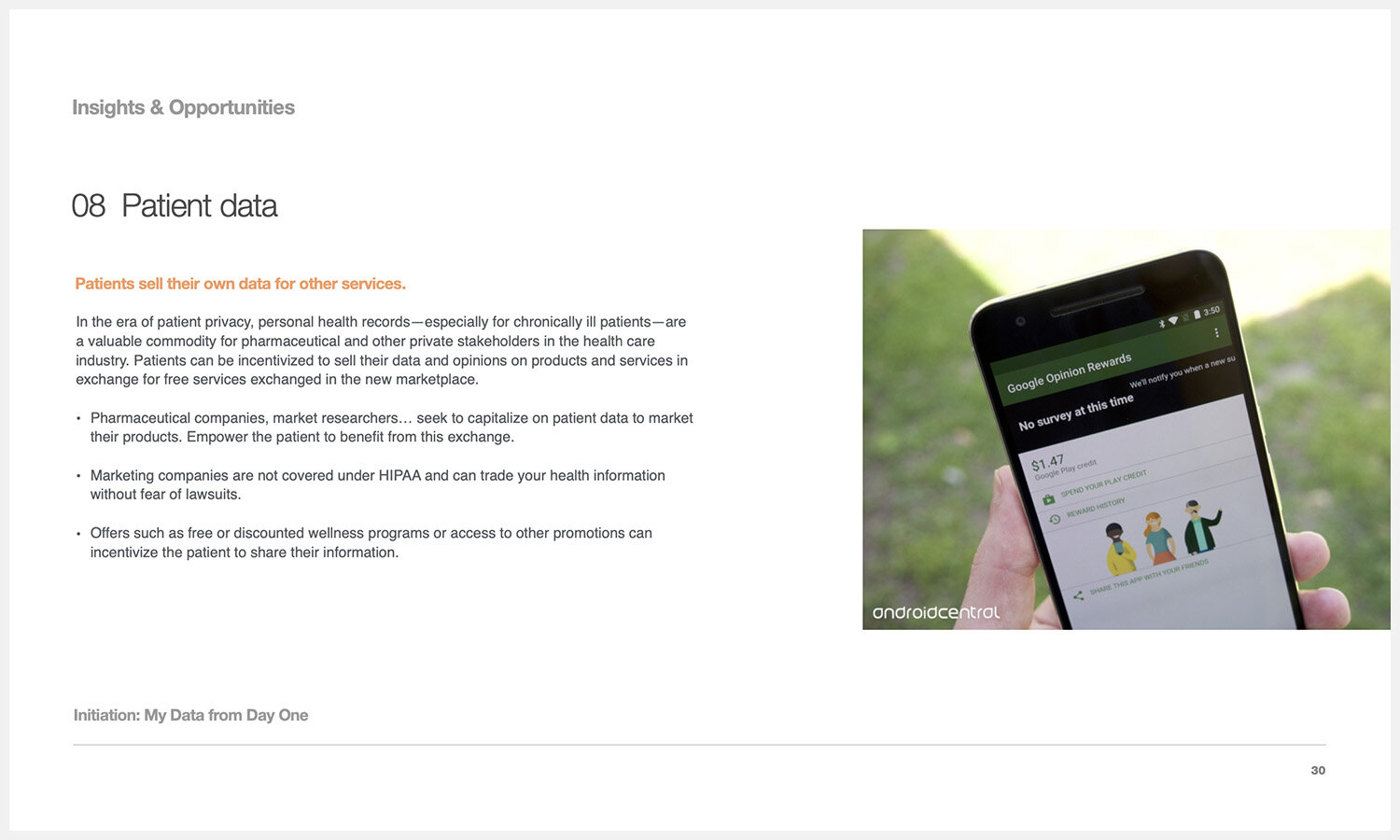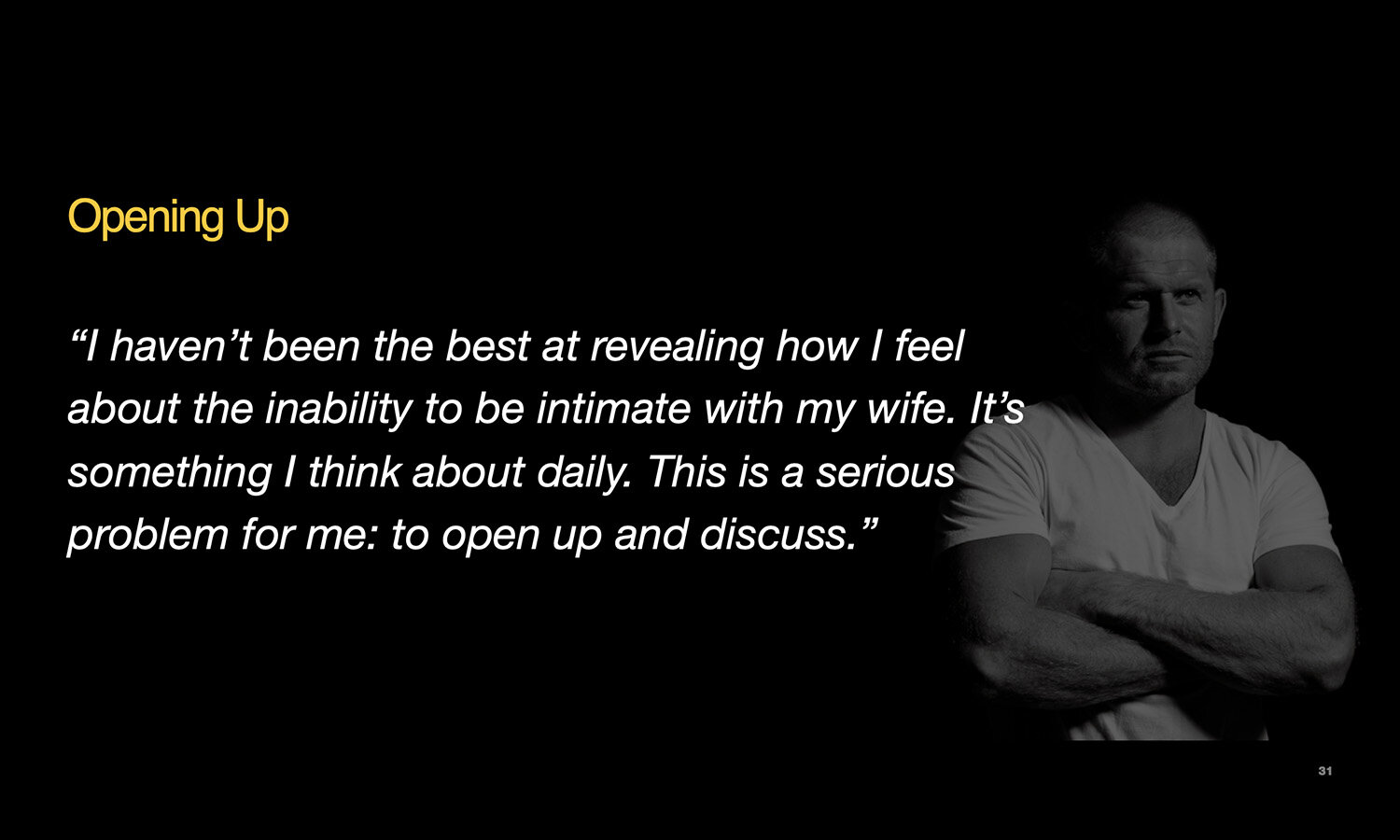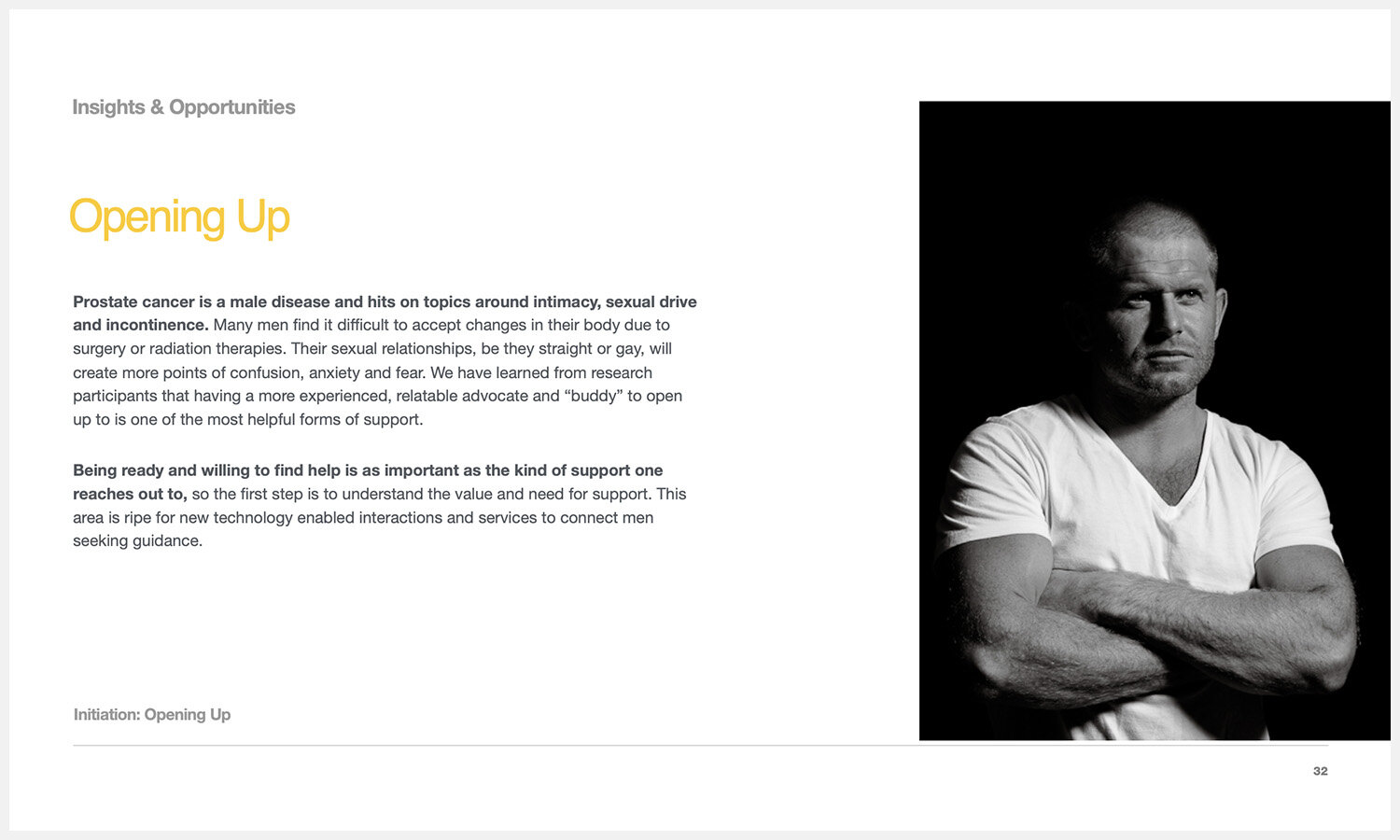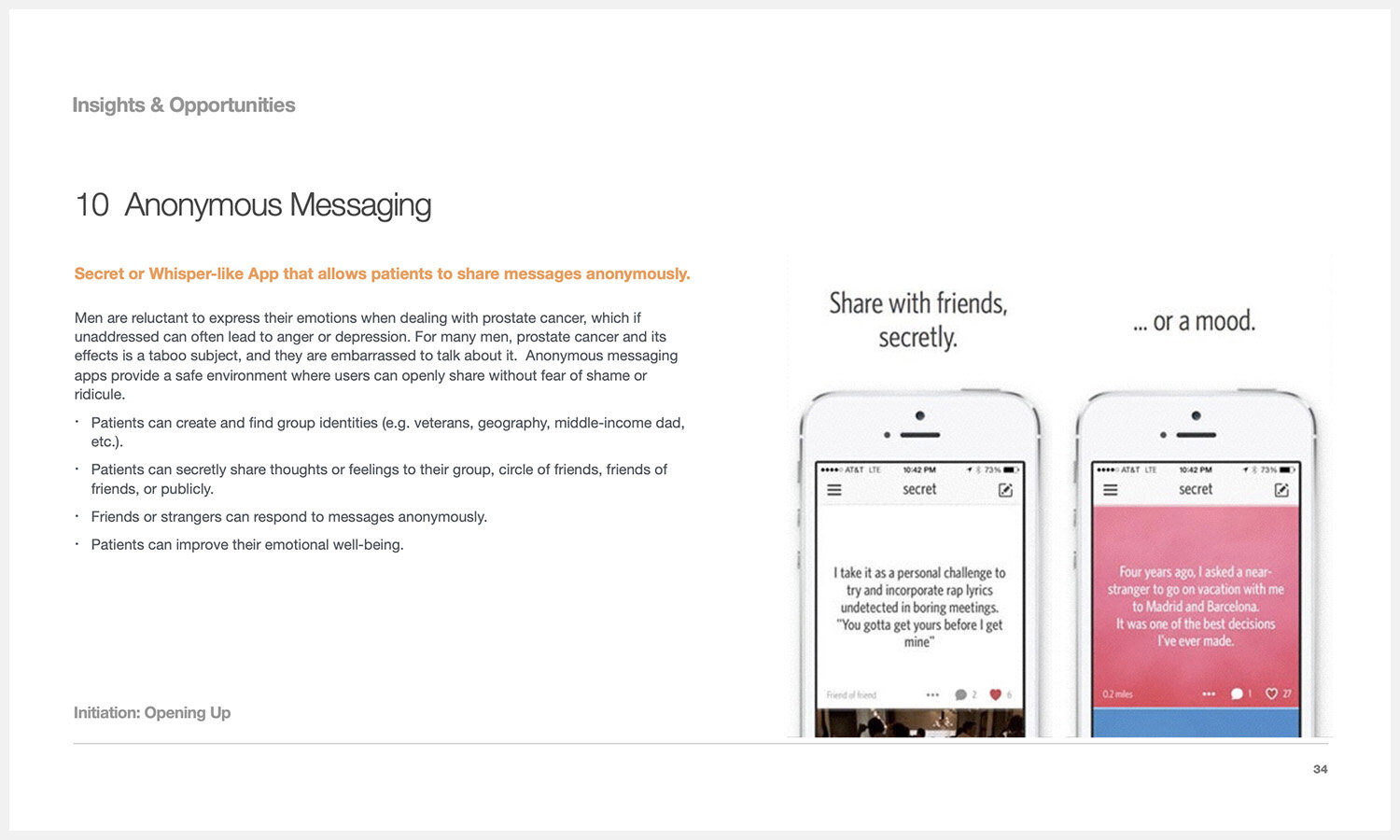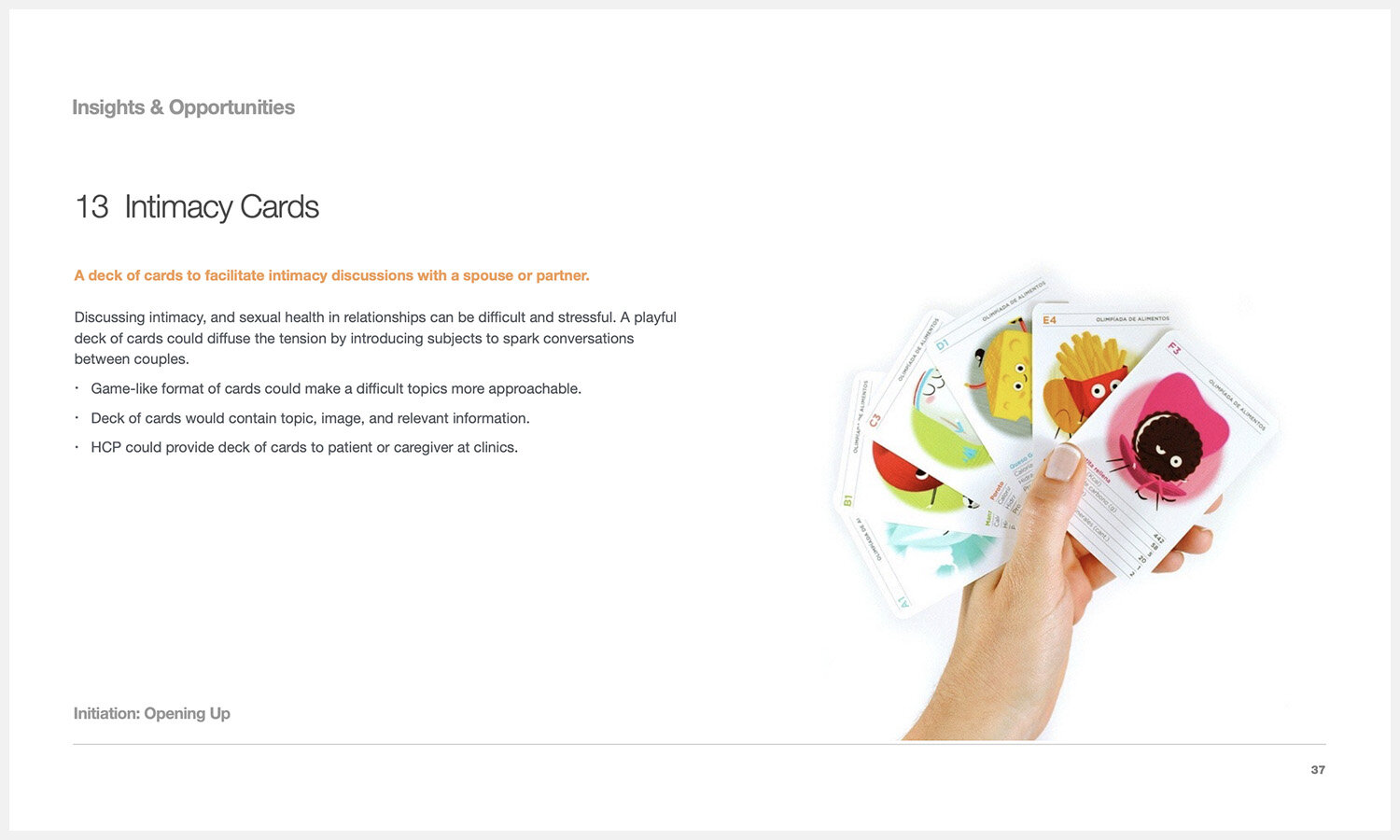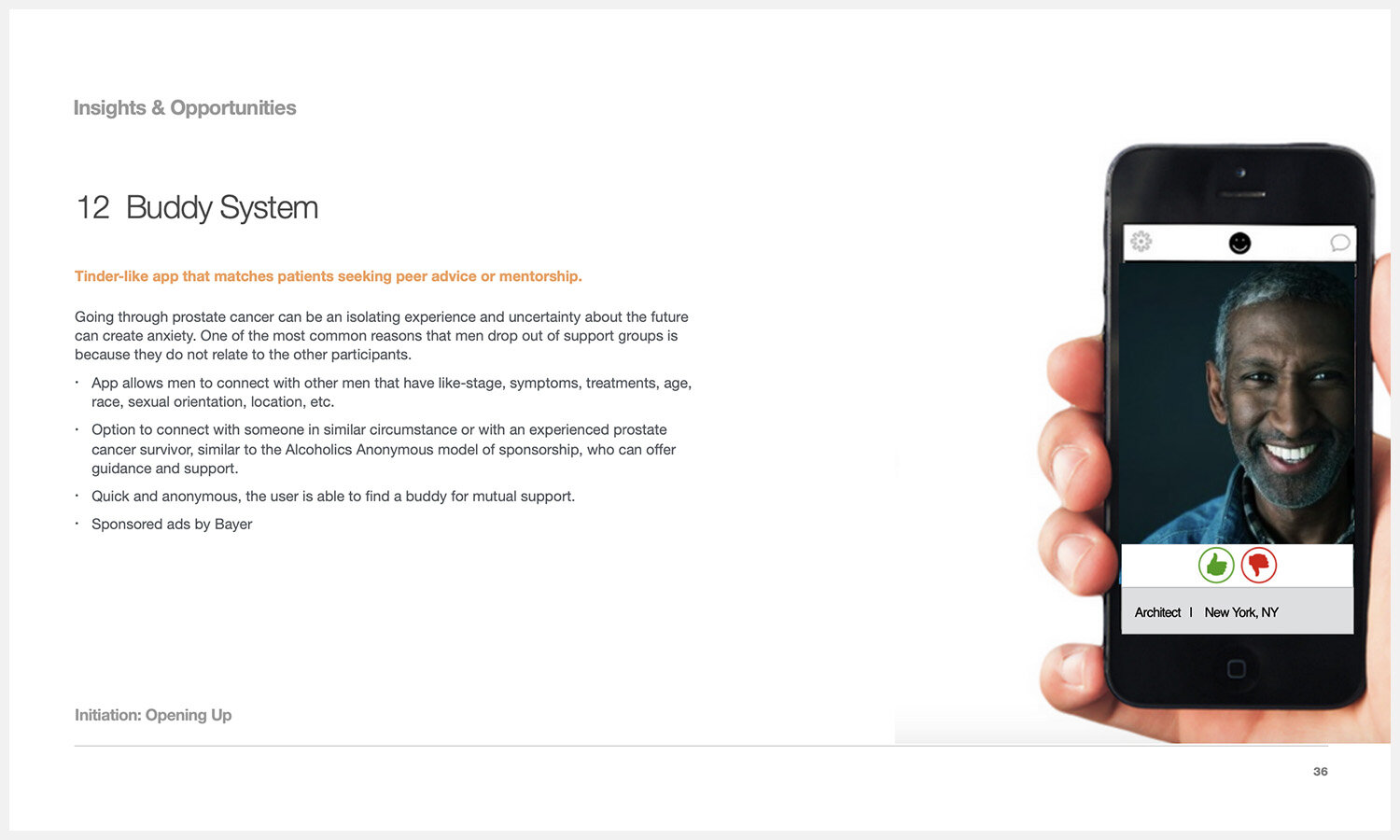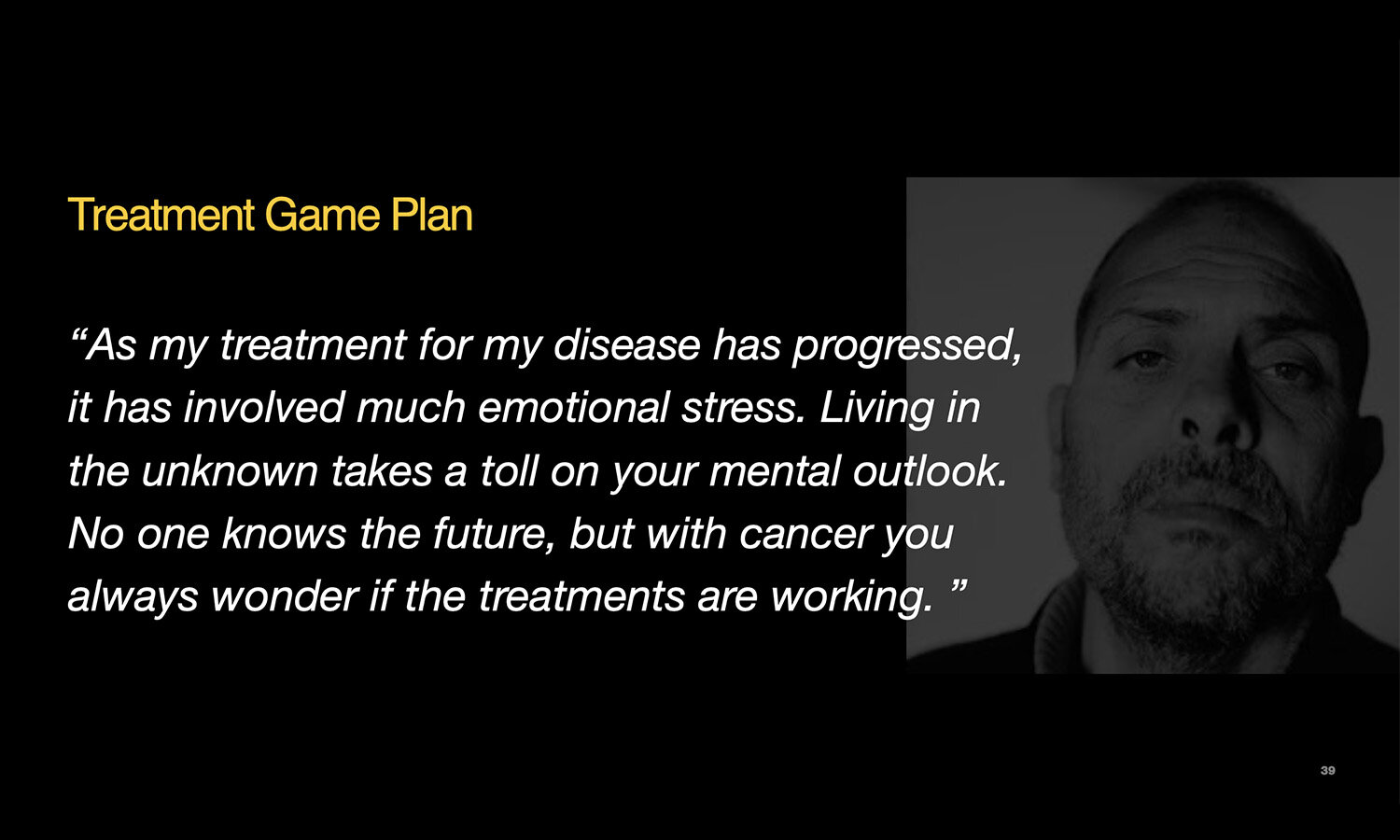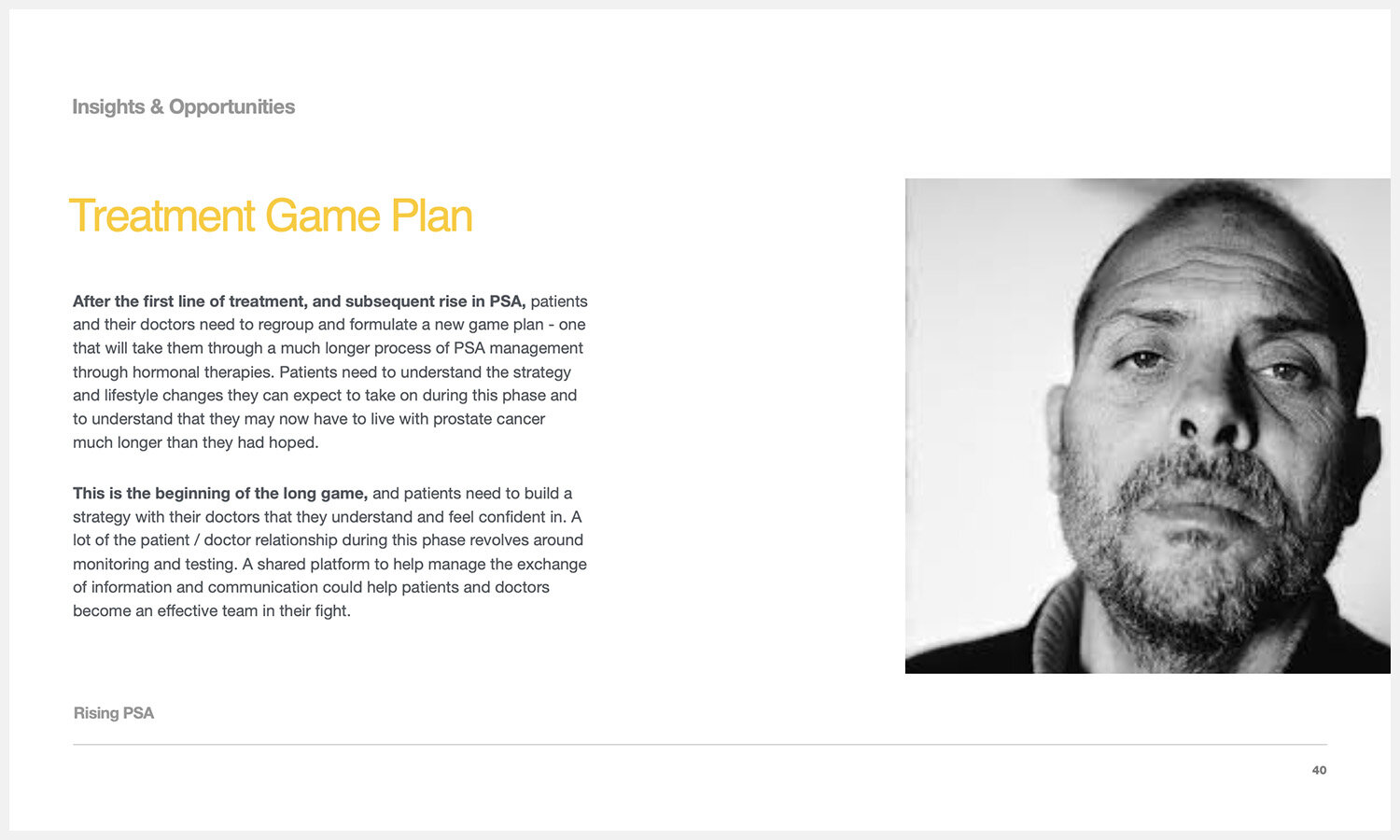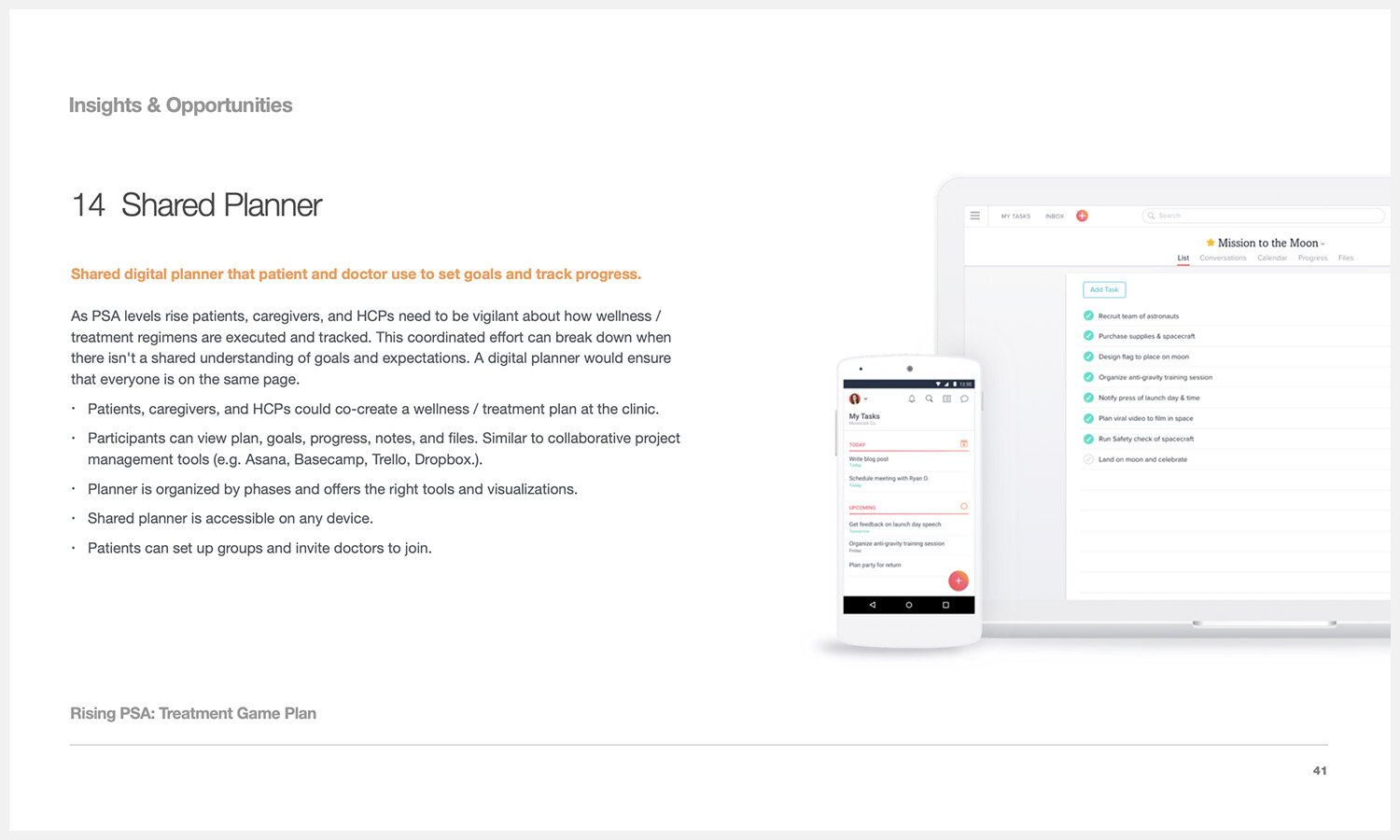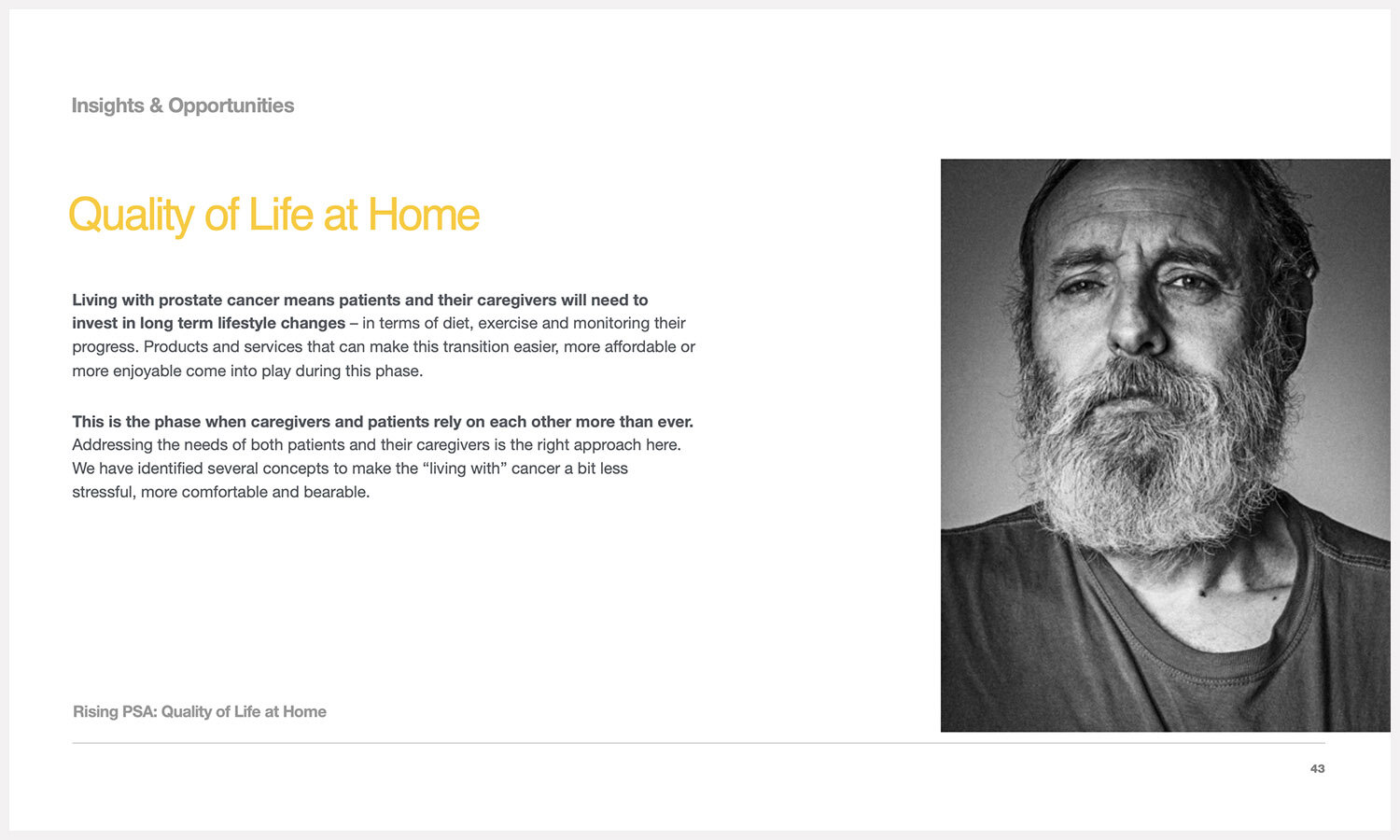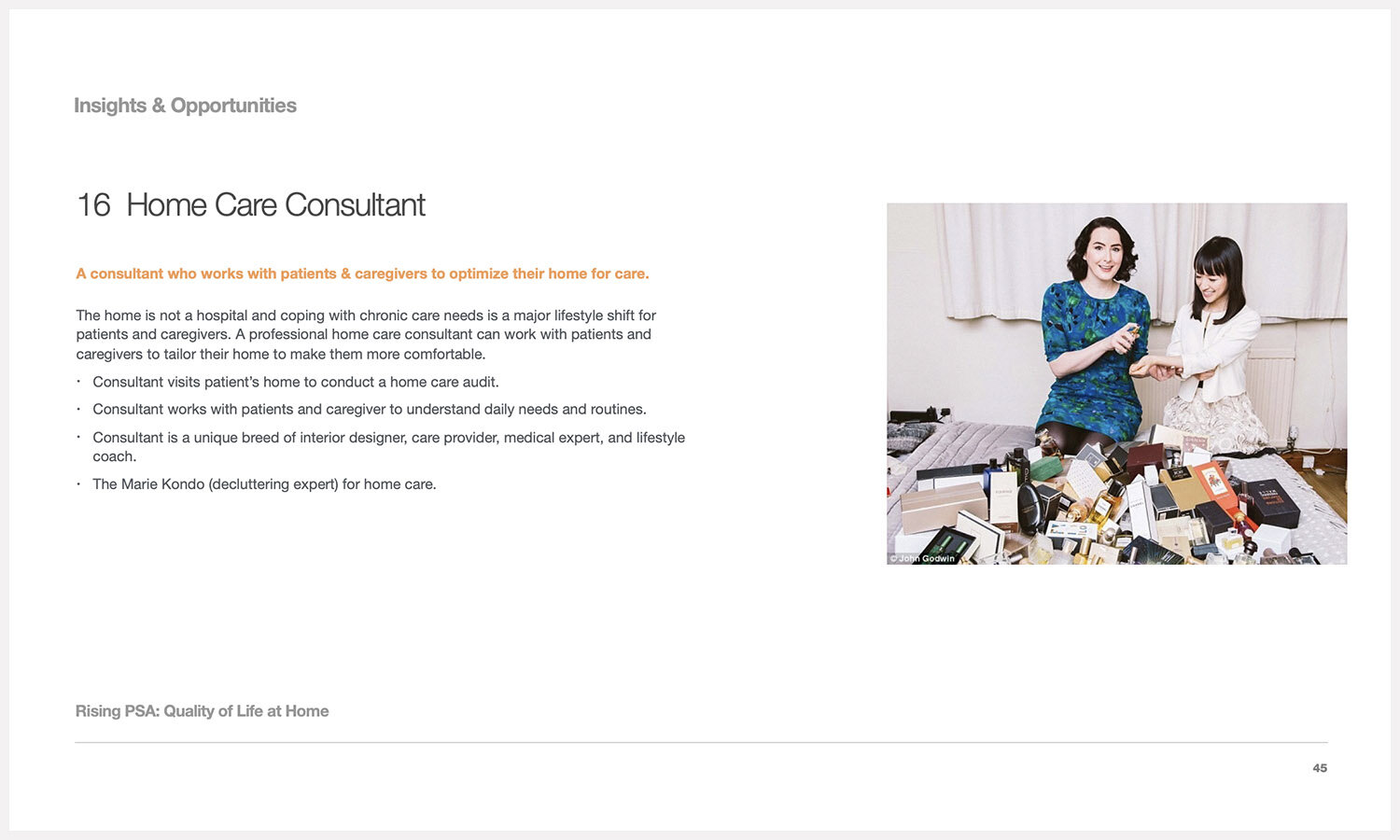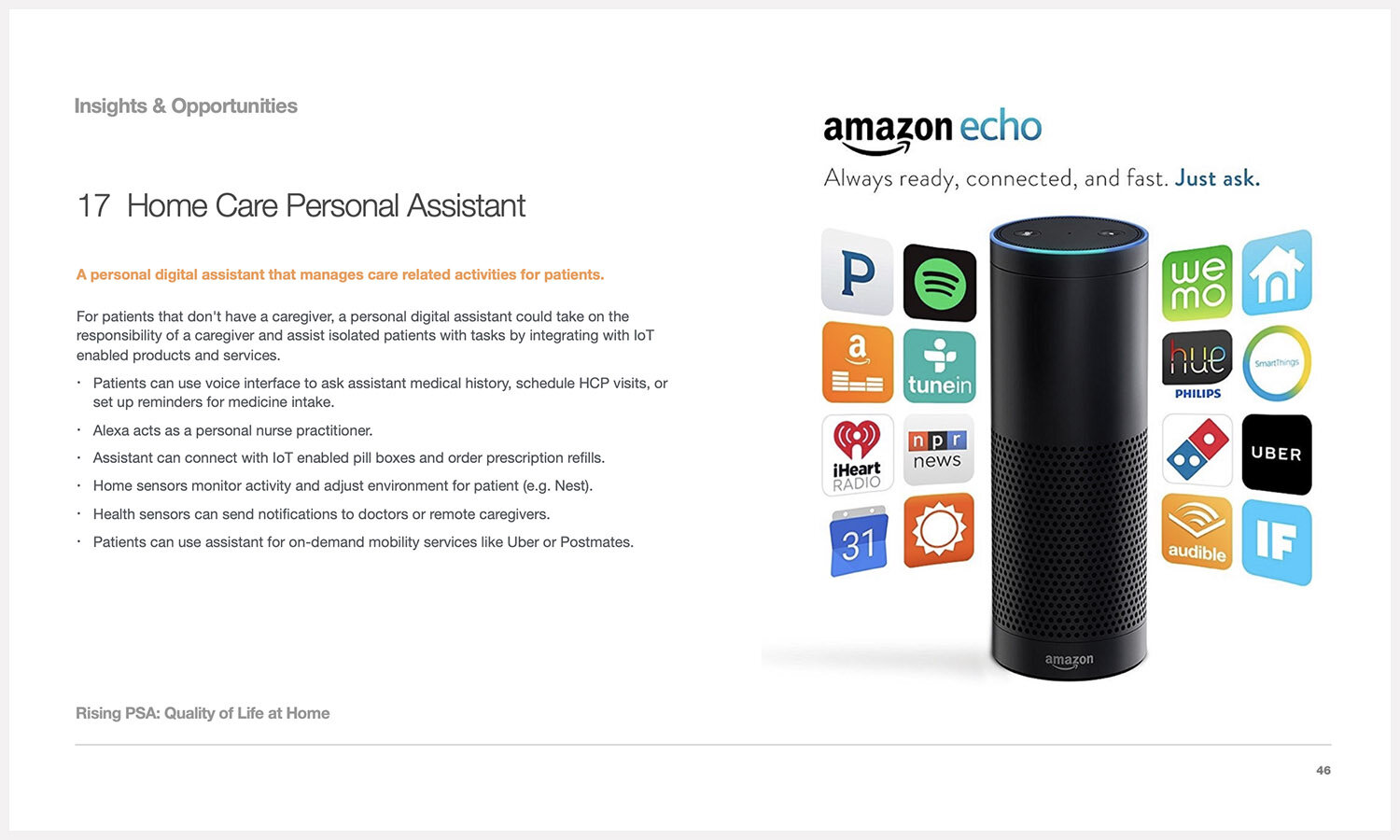OBJECTIVE
Bayer Oncology retained WiproDigital/Designit to develop high-level service and digital design concepts to improve the consumer’s engagement with their pharmaceutical, and the life experiences of the patient living with prostate cancer.
Our objective was to identify high-level service design concepts to improve consumer engagement with Bayer Oncology, identify patients that are progressing to prostate cancer earlier in the disease cycle and build the reputation of Bayer Oncology as a leader advancing the standard of care for prostate cancer.
RESULTS
27 high-level design concepts were created to address the client's initial objectives. These solutions were based on a synthesis of insights derived from secondary research, ethnographic studies and a co-creative client workshop.
Our proposals represent a call-to-action for Bayer to engage with the patient and caregiver in a new, more meaningful way to improve their experience living with prostate cancer and to engage with them earlier to advance the status of Bayer oncology in their lives.
PROJECT ROADMAP
PROCESS
Research
As the project design lead, I began by conducting desk research utilizing documents and studies previously executed by Bayer’s marketing department. In addition, online research was conducted to introduce the team to healthcare trends, prostate cancer, and the patient experience, accessing both qualitative and quantitative information.
Bayer hired a third-party research firm to conduct the ethnographic research on nine patients. Utilizing the research we were able to glean new insights from the day-in-the-life studies done on four cancer patients.
Stakeholder Interviews
I conducted one-on-one stakeholder interviews with representatives from Bayer marketing, radiology and patient advocacy to understand Bayer’s engagement with the patient—their pain points and strategies to market their pharmaceutical.
CLIENT CO-CREATION WORKSHOP
Guest Participants
• Bayer stakeholders
• Oncologists
• Nurses
• Patient advocates
The objective was to Identify and prioritize problems that are a reflection of both physician and patient needs. We then analyzed overlaps and gaps in their experiences to inspire new solutions.
Ecosystem
The ecosystem identifies and visually represents the network of relationships for the patient. In addition to the complex network required to support the patient, a key finding was recognizing the under-appreciated needs of the caregiver, often times a family member, and to provide solutions that benefit both the patient and the caregiver.
Personas
Personas were created based on secondary and ethnographic research done to date. Archetype personas for men living with prostate cancer as well as their caregivers—predominantly wives or adult children—were created to help us focus on the themes and characteristics specific to the users.
Journey Map
Journey maps were created, using the information gleaned from the ethnographic research and client co-creation workshop with oncologists, nurses and patient advocates.
Note: Journey Map was not “designed” as it was not part of our required deliverables.
INSIGHTS & OPPORTUNITIES
Being diagnosed and having prostate cancer is a long process, marked by three unique phases.
Based on our findings defined in the patient journey map, each phase requires a unique mindset and is associated with different treatment strategies.
Patients newly diagnosed with prostate cancer start here.
Their world is turned upside down. What many may not understand is the long road ahead. The initiation of treatment including active surveillance, surgery and/or radiation becomes the first line of defense. Some patients never have rising PSAs (prostate-specific antigens) after initiation. For these patients, they sometimes talk about being “cured.” Because of this possibility, it is the phase that is most challenging to set the right expectations.
Key needs:
- Understanding the long view
- Setting clear expectations
- Making an informed choice on initial treatment
- Balancing caution and optimism
Rising PSA after initial treatment is the beginning of the long game.
Doctors need to re-educate patients on the possibility of a long fight, and to start setting the right routines to live with cancer. PSA takes on a life of its own and patients’ sense of hope and despair go up and down with it. Patients and caregivers need to become much more actively engaged in their wellness and in differentiating between side effects and advanced symptoms.
Key needs:
- Setting and sticking to wellness routines
- Shared game planning with all stakeholders
- Active monitoring and feedback
- Learning to live with cancer
Signals point to more advanced progression to castration resistance.
Patients become aware that the cancer may continue to progress and that they need to become much more vigilant about symptoms of bone metastasis. Patients and caregivers start to look into more experimental trials and innovative treatments that may offer different results. Doctors try and focus on providing more aggressive treatment sooner where they can be more effective.
Key needs:
- Active monitoring of new symptoms
- Active engagement with new science and trials
- Not losing focus on quality of life
- Keeping up with caregiver needs
RESULTS: 27 DESIGN CONCEPTS
Based on our insights we identified 27 opportunities, within each 3 phases, to improve the life of men living with prostate cancer and their caregivers.





